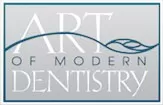3 Top Treatments For Gum Disease

When the bacteria and other particles in the mouth form plaque and harden into tartar, over time they can cause gingivitis, an inflammation of the gums. When gingivitis is allowed to continue untreated, it may advance into periodontal disease which is also called gum disease. Typically this happens when plaque is allowed to build up under and along the gum line.
Some symptoms of gum disease include bleeding or tender gums, swollen or red gums, sensitive teeth, loose teeth, consistent bad breath, receding gum line and pain when chewing. Other medical conditions may increase the risk of gum disease like smoking. In your Lakeview dentists office, we can use a probe to measure and check the depth of the pockets in-between the gum and tooth. The depth of these pockets is usually between 1 and 3 millimeters in a healthy mouth.
Gum disease can be treated. The key element is to control the infection, and for patients to follow up at home with effective daily care. Of course, treatments types will vary depending on each patient and the stage of the disease, but here are the top 3 most common treatments for gum disease:
1. Professional Cleaning
During a regular dental check up, a dental cleaning is performed to remove plaque and tartar from above and below the line of the gum. If we see signs of gum disease, we may recommend a professional cleaning more than annually.
2. Scaling and Root Planing
If needed, we can do a more in-depth cleaning that requires a local anesthetic. This is a non-surgical procedure that removes build up by scaling or scraping it away below the gum line and planing or making smooth the rough spots on a tooth. When the rough spots are smoothed out, it also removes the bacteria and leaves the surface clean for the gums to reattach to the tooth. The procedure is usually performed with we see that plaque and tartar build up below the gum line. A prescription medication may be prescribed to help prevent infection.
3. Surgical Treatments
Pocket reduction surgery, or flap surgery, is a procedure where the tarter is removed by lifting the gums back. Sometimes surfaces of the damaged bone are smoothed out to decrease the areas where bacteria may hide. The gums are then placed so that it fits tightly around the tooth. The space between the teeth and gums are minimized with this procedure, which also lessens the chance of bacteria growth.
Home Prevention
proper dental hygiene can go a long way in preventing gum disease with just the basics like brushing your teeth for two minutes twice daily, flossing every day, using an antibacterial mouth rinses, and stop smoking if you’re a smoker. Come in for regular checkups is vital as catching the signs of gum disease is so important to treating it.




